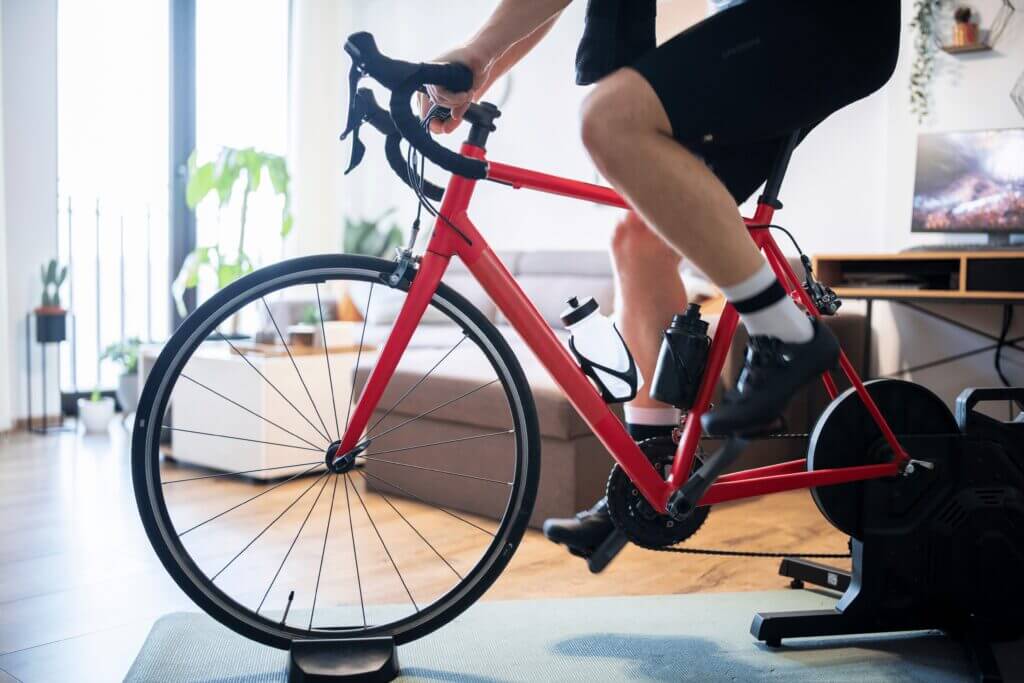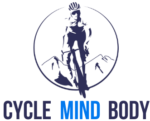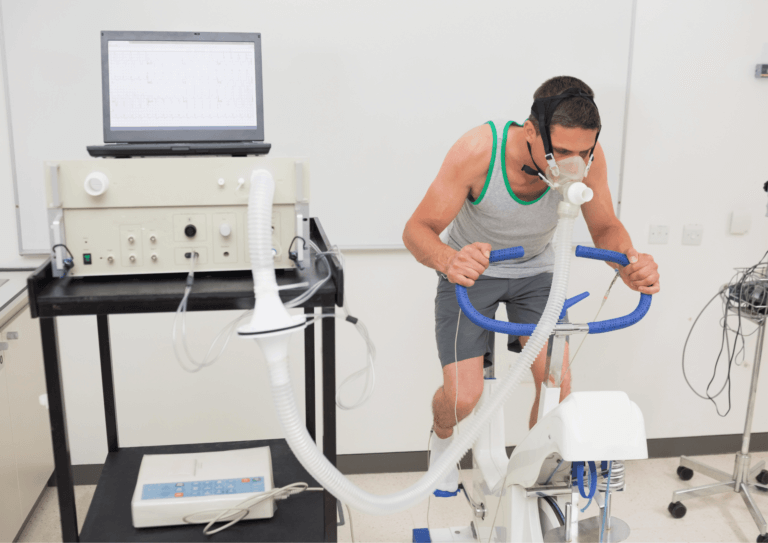Table of Contents
Whether you’re a seasoned cyclist or just starting out, you’ve likely heard the term “VO2 max” whispered in cycling circles. It’s more than just cycling jargon – it’s a key factor that can significantly impact your performance.
In this article, we’ll delve into the depths of VO2 max, unraveling its significance, the factors that shape it, and most importantly, whether you can improve it. By the end, you’ll be armed with insights to enhance your road cycling journey.
Understanding VO2 Max: The Engine of Cycling Performance
At its core, VO2 max represents your body’s maximum capacity to consume and utilize oxygen during intense exercise. This metric serves as a litmus test for your cardiovascular fitness and aerobic endurance.
Imagine your body as a finely tuned machine – VO2 max is the engine that powers your cycling endeavors. This measurement encapsulates the efficiency of your heart, lungs, and circulatory system, working together seamlessly to provide oxygen to hardworking muscles.
While various methods exist for estimating VO2 max, it’s most accurately measured in the controlled environment of a lab setting. Measured in milliliters of oxygen per kilogram of body weight per minute (ml/kg/min), a higher VO2 max indicates superior oxygen delivery to muscles, leading to enhanced cycling performance.
As your VO2 max improves, your body becomes more adept at sustaining prolonged efforts, allowing you to conquer longer rides and steeper climbs with greater ease.

Factors Influencing VO2 Max
While you might have been told that your genes dictate your VO2 max destiny, the reality is more nuanced. Genetic predisposition does play a role, but age, gender, and training history are equally important influencers.
Younger individuals tend to exhibit higher VO2 max values due to their more robust cardiovascular systems and oxygen transport mechanisms. However, with strategic training, even middle-aged cyclists can achieve impressive gains in their VO2 max, showcasing the body’s remarkable adaptability.
The average sedentary male typically possesses a VO2 max ranging from 35 to 40ml/kg/min, while for females, this value is relatively lower, falling within the range of 27 to 30ml/kg/min.
Elite Cyclists and Exceptional Measures
In stark contrast, elite male and female cyclists display an entirely different level of VO2 max measures. These exceptional athletes often boast measurements in the range of 80 to 90ml/kg/min for males and 60 to 70ml/kg/min for females.
This vast difference underscores the profound impact of rigorous training and specialized conditioning on VO2 max enhancement.
Real-Life Examples: Pro Cyclists and Their VO2 Max
To put these figures into perspective, consider the VO2 max values of renowned cyclists. Chris Froome, a well-known figure in the cycling world, reportedly boasts a VO2 max that fluctuates between the range of 80.2 to 88.2ml/kg/min, factoring in changes in weight.
Another impressive example is Tadej Pogačar, the victor of the 2020 Tour de France, whose VO2 max hovers in the low 90s, marking an extraordinary level of cardiovascular fitness and endurance.

Can You Really Improve Your VO2 Max? Debunking the Myth
In the past, people used to think that VO2 max was like a unchangeable marker for how good our bodies are at using oxygen when we exercise. But new research has completely changed this way of thinking.
This big shift in understanding comes from many new scientific studies. One really effective strategy that many people are using is following special training plans, especially one called High-Intensity Interval Training, or HIIT for short.
And guess what? The results have been really impressive! Cyclists who have tried this kind of training have seen their VO2 max levels go up by a lot.
This exciting discovery shows us that there isn’t a fixed limit to how much we can improve our VO2 max. Our bodies can actually change quite a bit.
This means that each of us has the ability to go beyond what we thought our limits were, and become even better at cycling. By using HIIT and always pushing ourselves a bit more, we can become much stronger cyclists, increasing our VO2 max and achieving more than we ever thought possible.

Strategies to Boost Your VO2 Max: Training Smart
When it comes to optimizing your VO2 max, a well-thought-out training approach is the compass that guides you toward success. Tailoring your training regimen to enhance this critical metric requires a strategic mindset.
Among the various methods available, High-Intensity Interval Training (HIIT) stands out as a tried-and-true technique that can supercharge your VO2 max growth. HIIT shines by capitalizing on the power of intensity variation.
Through a series of short, intense bursts of exertion, closely followed by carefully timed recovery periods, HIIT taps into your body’s remarkable ability to adapt. This dynamic cycle of effort and rest triggers physiological responses that lead to the elevation of your VO2 max.
Incorporating HIIT into your training plan doesn’t need to be complicated. Consider experimenting with different protocols like the Tabata method or 4×4 intervals, which involve four minutes of high-intensity cycling followed by four minutes of active recovery.
The beauty of HIIT lies not only in its efficacy but also in its adaptability to your fitness level and schedule.
However, it’s essential to remember that the magic of HIIT isn’t just in the “high.” Adequate recovery is equally vital to ensure that your body can fully absorb and respond to the training stimulus.
Balancing intensity with sufficient rest allows your muscles to repair, adapt, and grow stronger. So, while you might be tempted to push harder and longer, respecting recovery times is what ultimately propels you toward lasting VO2 max improvements.
Incorporating HIIT intelligently and harmonizing it with your cycling routine sets you on a trajectory to unlock your full VO2 max potential.
Beyond HIIT: Diversifying Your Approach to VO2 Max Enhancement
While High-Intensity Interval Training (HIIT) takes center stage in VO2 max improvement strategies, it’s essential to recognize that it’s not the sole path to success.
An effective way to further enhance your VO2 max is by incorporating longer threshold workouts into your training routine. During these sessions, you’ll pedal at an intensity slightly below your VO2 max, allowing your body to adapt and build sustained endurance over time.
Lactate Threshold Intervals: Perform intervals where you maintain a pace just below your VO2 max for 5-10 minutes, followed by a brief recovery. Repeat these intervals 3-5 times during a single workout. This approach gradually pushes your body’s limits, promoting the efficient utilization of oxygen while clearing lactate buildup.
Progressive Overload Rides: Start your ride at an intensity below your VO2 max and gradually increase the effort over the course of the ride. This progressive overload challenges your cardiovascular system and enhances your endurance capabilities.
What’s intriguing about these longer threshold workouts is their ability to bridge the gap between your VO2 max and lactate threshold. This dual benefit ensures that not only is your body optimizing its oxygen consumption capacity, but it’s also increasing its ability to clear lactate, thereby delaying the onset of fatigue during high-intensity efforts.
Furthermore, laying a solid foundation of aerobic capacity is pivotal in your journey to boosting VO2 max. Long, steady rides that focus on maintaining a consistent pace over extended periods help condition your cardiovascular system, preparing it for the demands of more intense training.
Endurance Base Ride: Aim for a ride that lasts 2-3 hours at a comfortable, steady pace. Maintain a heart rate that allows you to carry on a conversation without struggling. This kind of ride enhances your aerobic capacity, improving your body’s overall efficiency in utilizing oxygen.
Think of these rides as the building blocks upon which your VO2 max improvements can thrive, ensuring a well-rounded approach to cycling performance enhancement.
Monitoring Progress: Tracking VO2 Max Improvements
In the modern world of road cycling, keeping tabs on your VO2 max progress has become remarkably convenient, all thanks to cutting-edge technology.
Wearable fitness trackers now offer a window into the inner workings of your training endeavors, offering real-time insights that help you fine-tune your efforts. These nifty gadgets not only measure the distance you cover but also delve into the nitty-gritty of your cardiovascular exertion.
Additionally, incorporating regular testing and assessment procedures, such as incremental cycling tests, into your routine provides a concrete measure of your progress. These tests help you gauge the efficacy of your training regimen over time.
As you journey towards elevated VO2 max levels, it’s essential to appreciate that improvements don’t occur overnight. Instead, they materialize through a gradual process of consistent effort and dedication.
By celebrating each incremental step forward, you’ll find the motivation to stay on course and witness the transformative power of your commitment to cycling excellence.

Overcoming Plateaus and Challenges
In the world of cycling, just like any other fitness pursuit, facing plateaus is a common occurrence. When you notice your VO2 max gains hitting a pause, it’s a signal to take a closer look at your training strategy.
This is the time to mix things up – try different types of workouts, tweak the level of effort you put in, and give room for active recovery. While pushing yourself is crucial, avoid the pitfall of overtraining, as it can set you back.
The magic formula lies in striking the right balance between pushing yourself and allowing your body to recover. This equilibrium fuels steady progress. Yet, it’s not just your muscles that need training; your mind plays a pivotal role too.
Building mental toughness is key. Embracing challenges and persistently moving forward are the hallmarks of a resilient cyclist. When you hit those tough spots, it’s your strong mindset that will help you power through and continue your journey to improved VO2 max and heightened cycling performance.
Understanding the Bigger Picture: Beyond VO2 Max
While VO2 max is a critical metric for cycling performance, it’s essential to recognize that other factors also influence your capabilities on the road. One such factor is FTP, or Functional Threshold Power.
FTP signifies the highest power output you can sustain for an extended period without accumulating excessive fatigue. Improving your FTP is integral to maintaining higher speeds during endurance rides and competitions.
Just as you’ve dedicated time and effort to enhancing your VO2 max, focusing on improving your FTP can lead to more well-rounded progress. By balancing the development of both VO2 max and FTP, you ensure that you’re equipped to handle a variety of cycling challenges and scenarios.
So, as you strive for that optimal VO2 max, remember to consider the broader spectrum of factors that contribute to your overall cycling prowess.

FAQ About Cycling VO2 Max
What is a good VO2 max level for a cyclist?
VO2 max values vary based on factors like age, gender, and fitness level. However, for trained male cyclists, values above 60 ml/kg/min and for females above 50 ml/kg/min are generally considered impressive. These benchmarks reflect the potential for enhanced endurance and performance on the bike.
Can I improve my VO2 max without intense training?
While high-intensity training like HIIT is highly effective, other methods, such as longer threshold workouts and endurance rides, can also contribute to VO2 max improvement, albeit at a different pace. These alternatives provide a more gradual route to boosting your cycling capabilities.
How often should I test my VO2 max?
Periodic testing every 2-3 months can provide insights into your progress. However, remember that VO2 max improvement takes time, so be patient and consistent with your training. Regular assessments ensure you’re on the right track and making meaningful strides.
Does VO2 max decline with age?
Yes, VO2 max typically decreases with age. However, engaging in regular, structured training can significantly mitigate this decline and even lead to improvements in older individuals. Embrace exercise as a tool to defy the natural effects of aging and maintain your cycling edge.
Is it possible to overtrain while working on VO2 max?
Yes, overtraining can hinder progress and lead to fatigue and injury. Balancing intense sessions with adequate rest and recovery is crucial for optimal VO2 max gains. Prioritize recovery and listen to your body to avoid setbacks on your journey to improved cycling performance.

